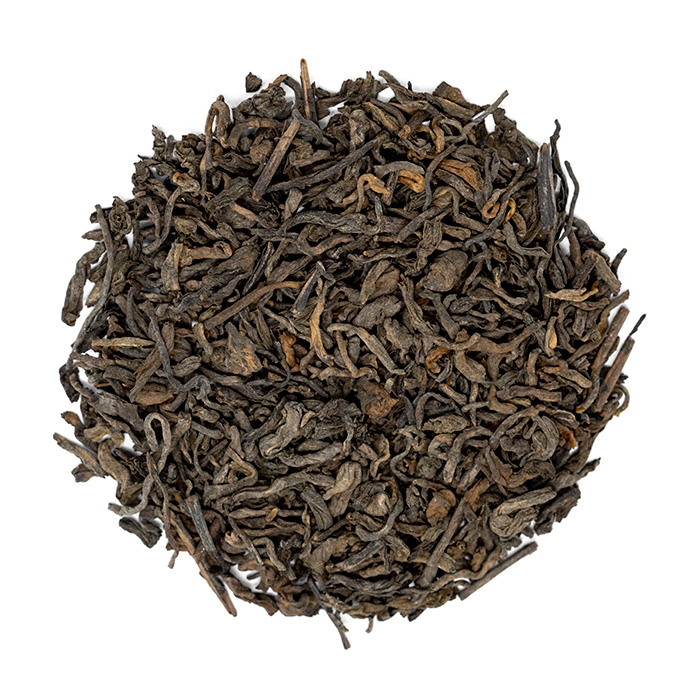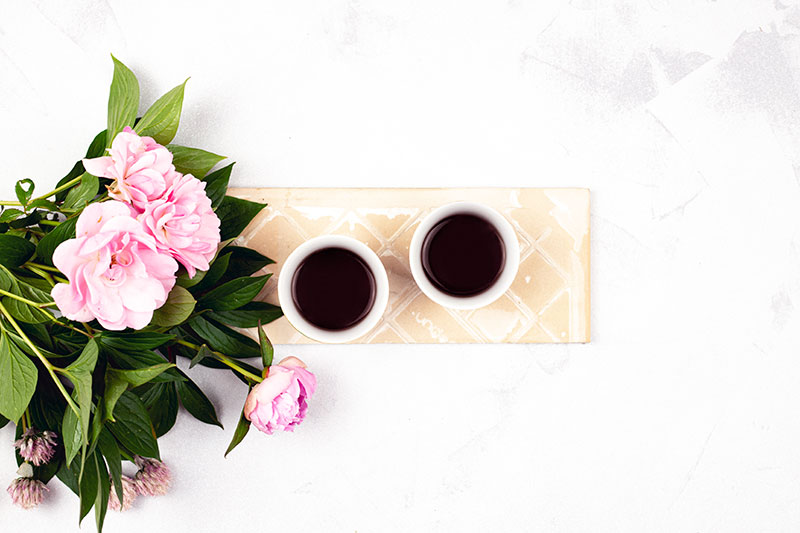Pu-erh Tea Taste Guide
Peach, ripe plums, maple syrup, cooked pak choi and honey all sound tempting. But, every now and then you might encounter flavors that don’t belong to the typical flavor chart. The flavor of tea depends on many factors – from soil, processing methods and producer’s skills, to brewing method and storage conditions. And, of course, personal preferences matter too.
Pu’erh may be one of those teas difficult to get used to, even when there’s nothing wrong with the flavor. It’s unique, very different from delicate white teas, refreshing green teas or malty black teas. Pu’erh is an acquired taste, but those that love it, can’t imagine a day without it.
What is Pu’erh tea?
Pu’erh is a special type of Chinese tea from Yunnan province. It belongs to the category of fermented teas, usually called “dark“ tea or “black“ tea in China. It can be naturally fermented over time or by using a special pilling technique to accelerate the aging process. This technique makes pu’erh suitable for drinking right after it’s made. Those two types are called raw and ripe pu’erh or sheng pu erh and shou pu erh. Both of them contain different beneficial fungi and bacteria and may offer many health benefits. However, they influence the flavor too.
In Chinese language, what we call black tea is actually “red“ tea or hong cha, and what we call dark tea is „black“ tea or hei cha.
What are different types of pu’erh tea?
Ripe pu’erh is available in loose leaf style and in different compressed forms such as bricks, mushrooms, cakes and others. Raw pu erh is compressed into cakes and bricks too and is often available in chunks torn from a single tea cake or a brick.
Pu’erh can be made from plantations, tea bushes or wild trees. Some wild trees may be over a few hundred years old.
What are the best pu’erh flavors?
On the good side of the pu’erh flavor chart we can find some truly amazing flavors. Raw pu’erh is more fresh, more mellow and often more light. It can have woody, smokey, tobacco, floral or spring lawn notes. Raw pu’erh may have some bitterness, followed by a sweet aftertaste. Ripe pu’erh is usually earthy and never bitter. The flavor will depend on many factors – from the leaf material to aging conditions and type of bacteria and fungi that will develop, to storage conditions and brewing methods.

Ripe Pu’erh tea
Common issues with the pu erh tea flavor profile
Pu’erh has a very interesting flavor profile. It can range from fresh tobacco and wood to earthy with fresh moss notes. But you may experience flavors that are not typically considered pleasant. Here are some of them.
What is pu erh tea tastes like dirt?
“Although no tea should taste like dirt, some pu’erhs may have a “dirt“ note. This may happen for a few reasons. Firstly, it’s actually possible that there is some dirt and dust in your tea. Pu’erh can come from many sources. Today it’s one of the most counterfeit teas in the world. Why? Because the price of pu’erh tea only gets higher with its age. The world-wide popularity of pu’erh tea started only about 50 years ago, when the ripe pu’erh was invented.
The other explanation for the “dirt“ note is – a personal taste. Ripe pu’erh has a very unique earthy note that can’t be experienced from any other tea.
What is the solution? Always wash pu’erh tea leaves with one short 5-10 seconds steep with hot water. Discard the water and then make a second infusion you will drink. This will remove any potential dirt.
What if pu erh tea tastes like fish?
Worse than dirt is the fishy note. Some pu’erhs may taste like raw fish, and not in a pleasant way. This can happen with both raw and ripe pu er tea, but it may be more common in the ripe ones. Fishy flavor may come from the fungi and bacteria in pu’erh. If your tea has a strong fish flavor, it’s better to avoid it than try to fix its flavor.
What if pu’erh tastes like mold?
Pu’erh may taste like mold too, especially raw pu’erh. The reason could like in inappropriate aging conditions. Raw pu’erh is always aged – the longer the better – to develop a certain flavor profile and mellowness. This aging has to be done in the right way though. Ripe pu’erh can be aged too, but the aging process won’t influence the flavor so much. However, it’s still possible to have a moldy note too, if it was stored in bad conditions. If your tea tastes like mold, it’s better to avoid it too.
What if pu’erh tastes extremely bitter?
Pu’erh can go into both extremes. It can have absolutely no bitterness even when you brew it with boiling water, like ripe pu erh leaves, or it can be extremely bitter, like some raw unaged young pu’erh teas. But it’s more than possible that some raw pu’erhs will never be bitter, even when they are fresh. Sometimes, high quality teas can be bitter too, and this will depend on the production area.
If your tea is undrinkable, use cooler water and steep it for a few seconds only. Increase the steep time for subsequent infusions. If the bitterness is still strong, you can let it age for a couple of years. Keep in mind though, to get a good quality aged tea, you need a good quality fresh tea too.
How to make pu erh tea taste better
If your tea is not fishy, moldy or dirty, but you still find it difficult to enjoy the unique flavor, you can try the following:
1. Blend dry leaves with your favorite fruit tea. Pu’erh blends great with tropical fruit, peaches, oranges or similar fruits.
2. Add a slice of fresh orange when brewing your tea or brew it with fresh fruits. Learn how to brew tea with fresh fruits here – 4 Homemade strawberry tea recipes.
3. Age it yourself. If there’s nothing wrong with your pu’erh tea but you still don’t quite enjoy the flavor, let it sit for another year. This solution could work with raw pu’erh, but rarely with the ripe pu’erh. Remember to keep it away from sun, mold, water or heat.
4. Add dry flowers. The flavor of pu’erh goes well with many different flowers – roses, chrysanthemum, jasmine, osmanthus, and others. Read more about flower teas here.
Disclaimer: This article is for informational purposes only. It’s not intended to replace medical advice, diagnosis or treatment. Every person is different and may react to different herbs and teas differently. Never use teas or herbs to treat serious medical conditions on your own. Always seek professional medical advice before choosing home remedies.




